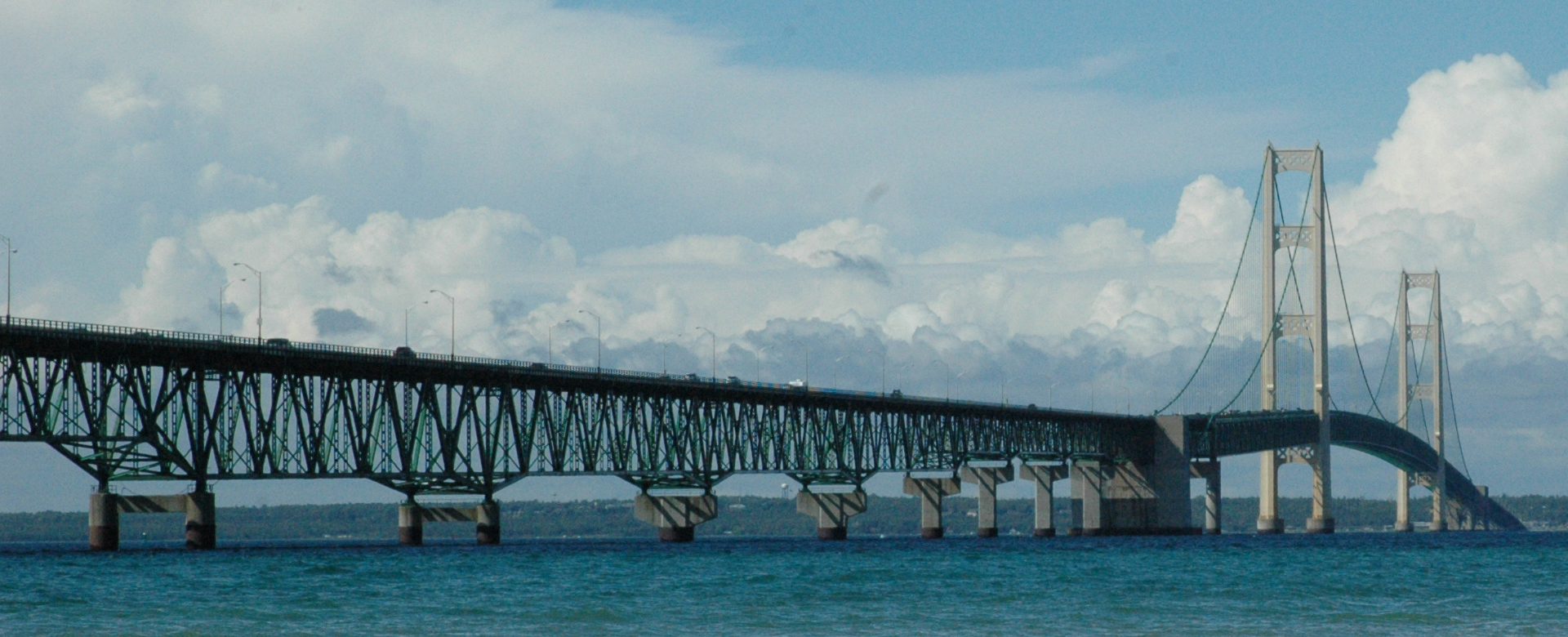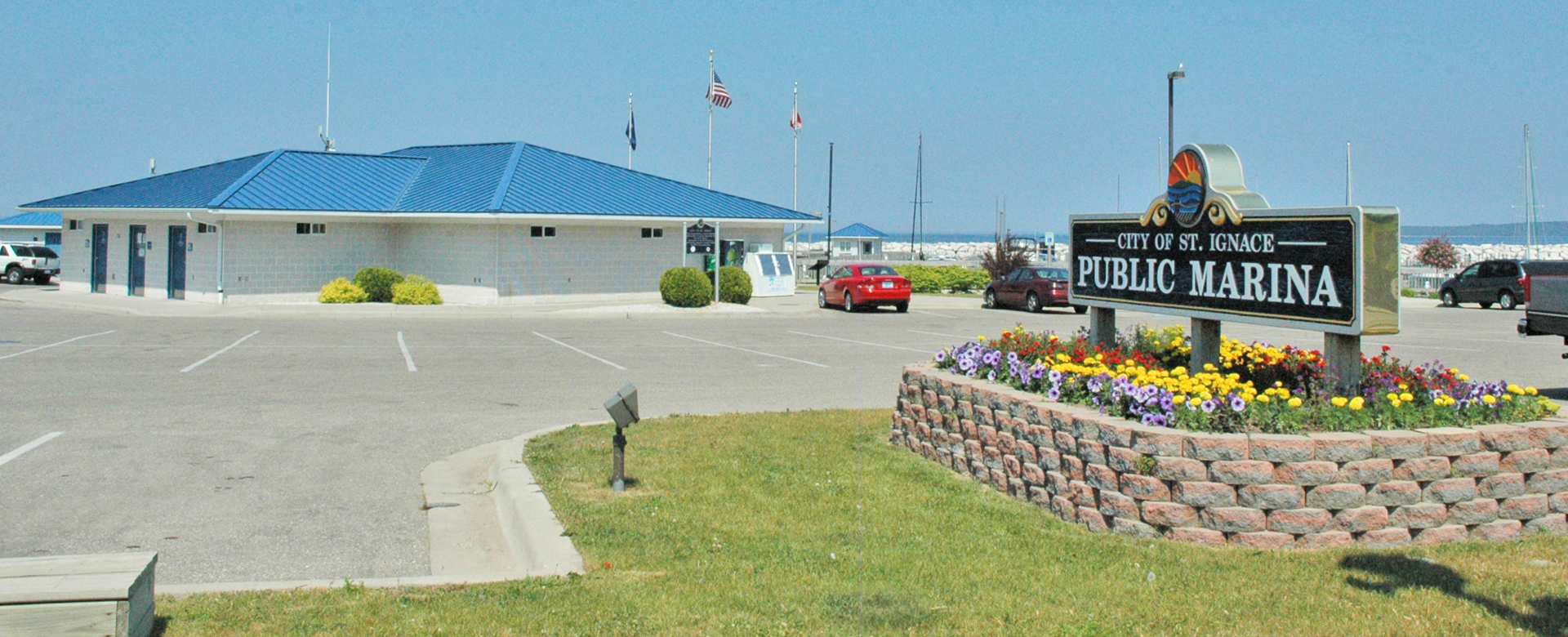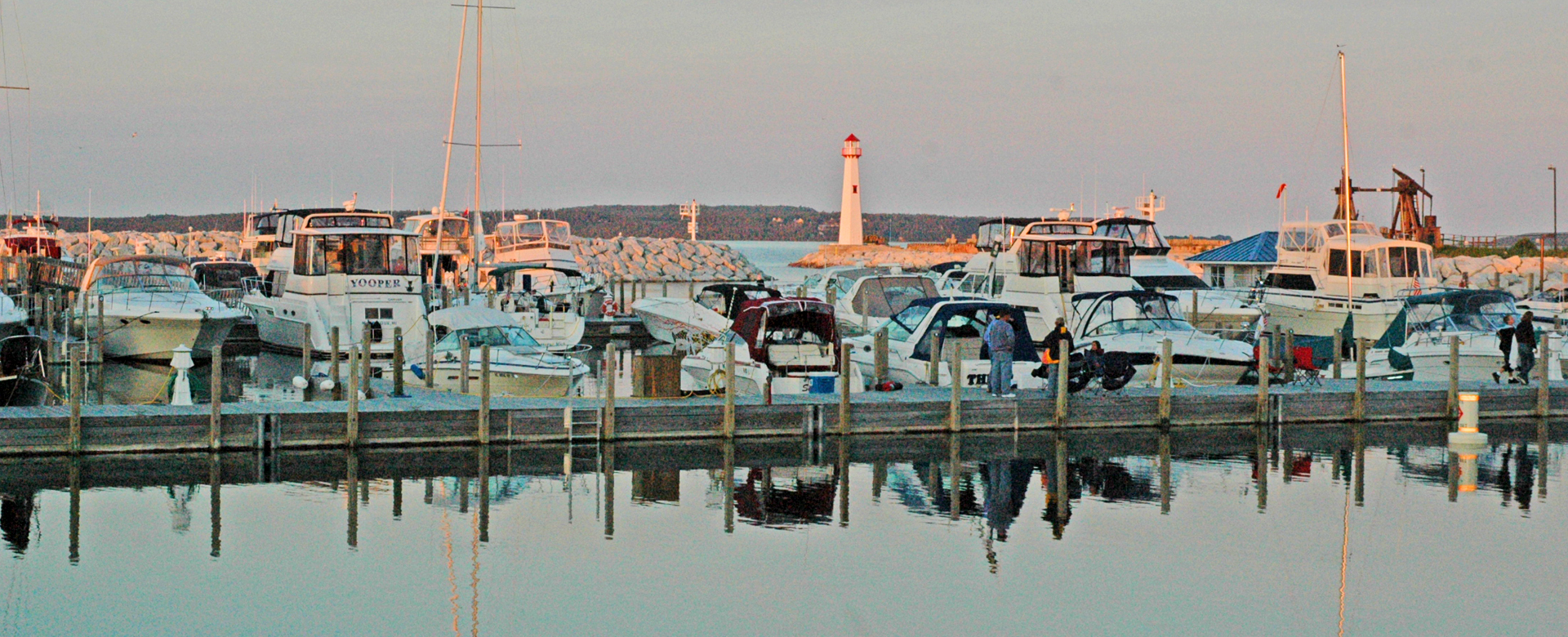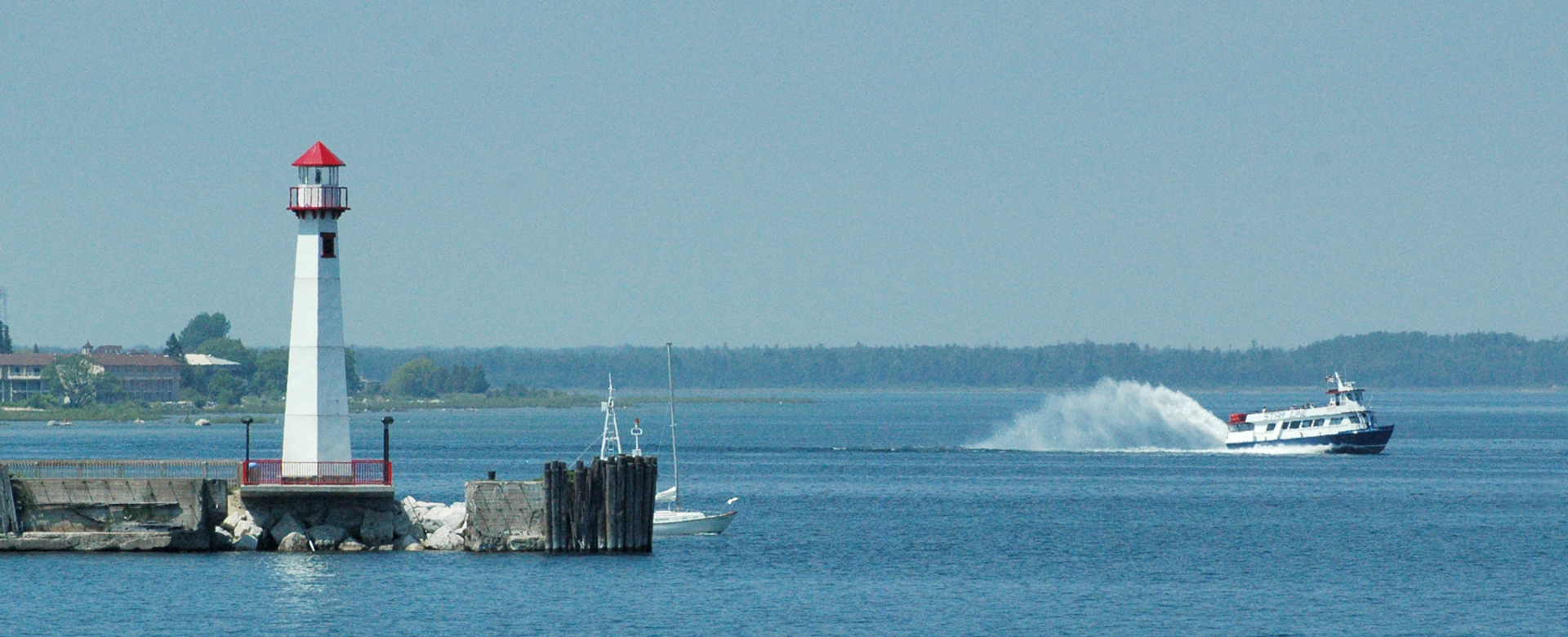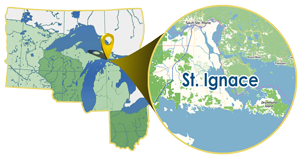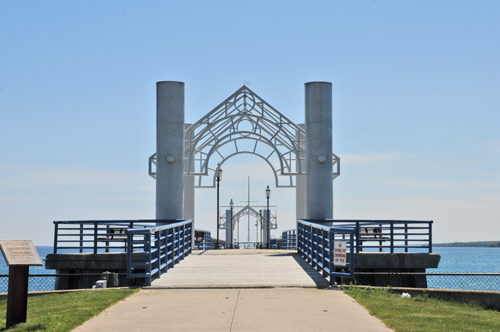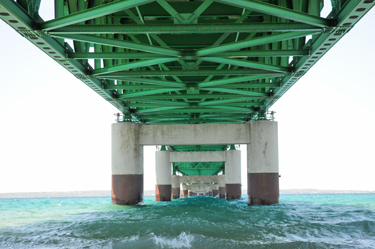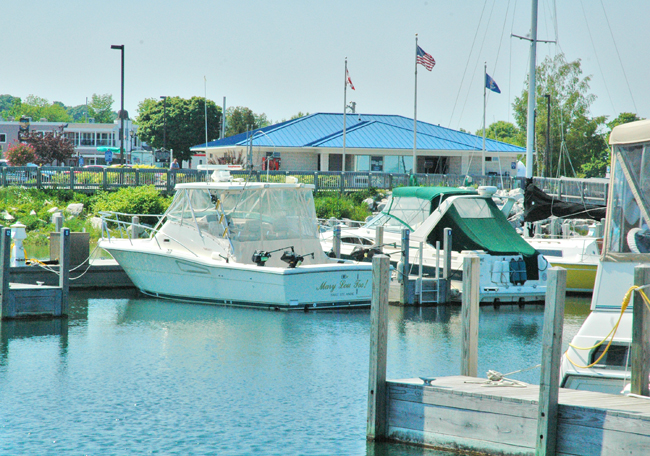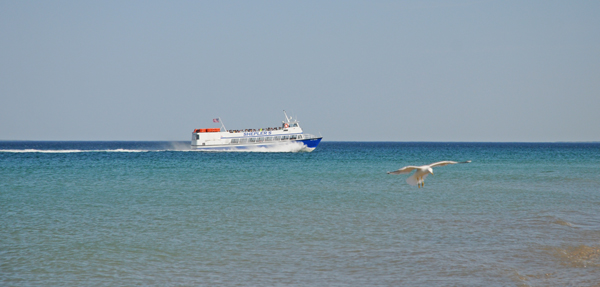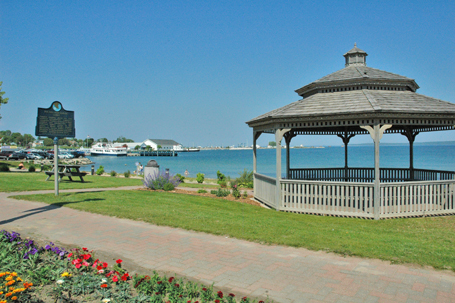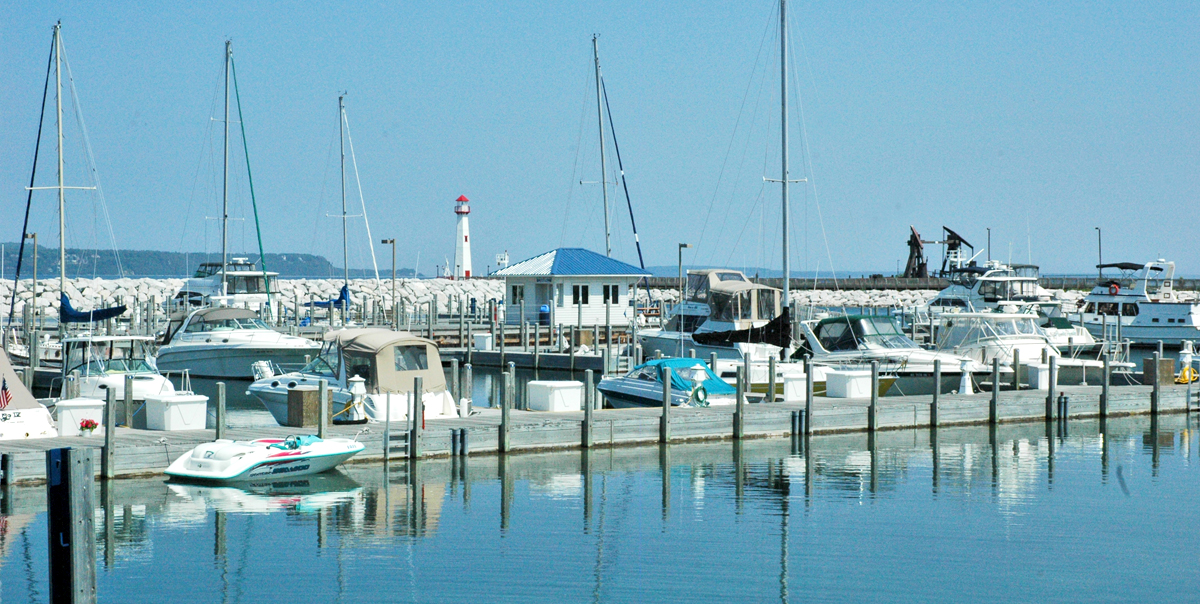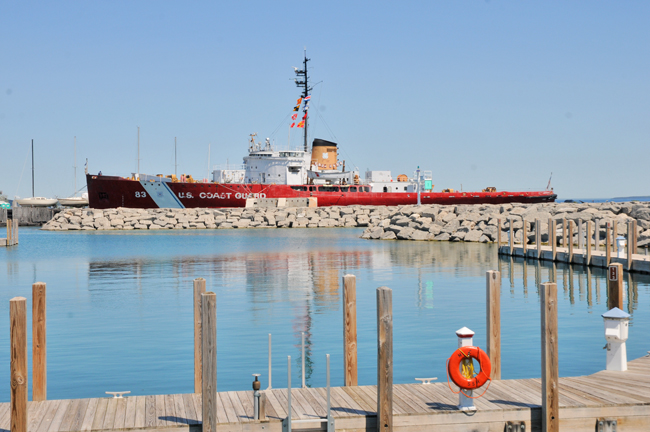St. Ignace Visitors Bureau
6 Spring Street, Suite 100
St. Ignace, MI 49781
(800) 444.9979 or (906) 643-6950
www.stignace.com
The history of St. Ignace and the Straits of Mackinac begins in the days following continental glaciation. The unique land forms and water courses were created as glaciers perhaps thousands of feet thick moved in a south westerly direction gouging, smoothing and abrading. When the climate moderated, the glaciers retreated northward creating even more channels, lakes and rivers.
The Anishinabeg - an Ojibwa term describing the original peoples - were the first residents. Oral tradition and archaeological research suggest that occupation of the Great Lakes Basin dates back forty to fifty thousand years. The natives of the St. Ignace region were migratory. In the spring, the Anishinabeg gathered maple sugar and fished sturgeon and smelt. Summer found them in settlements surrounded by crops of corn, potatoes and squash, and near the abundant supplies of wildlife, fish and berries. They developed efficient housing, watercraft, hunting and farming tools.
The heritage of the Straits evolved and changed over the centuries beginning with the arrival of Roman Catholic missionaries and then French and British explorers and fur traders. The very name St. Ignace came originated with the Jesuit missionaries who christened the community in honor of the founder of the Society of Jesus, St. Ignatius Loyola. Jesuits priests including Fathers Marquette, Charlevoix, and Allouez are remembered in the Upper Peninsula, but the majority of the priests who visited the area have passed, unremarked, into history.
The natural waterway joining Lakes Michigan and Huron at the Straits of Mackinac generated extensive water traffic, and prompted the establishment of an outpost during the period of French occupation. The outpost - Fort de Buade - became the seat of King Louis XIV’s authority in the interior of North America. French notables including Rene-Robert Cavalier, Sieur de La Salle and Antoine Lamothe Cadillac spent time at the post. St. Ignace was among the largest settlements in New France from the last decade of the 15th century until the establishment of Detroit in 1701. The British arrived in the St. Ignace region with the defeat of the French during Seven Years War.
St. Ignace played a pivotal role in the fur trade until this industry began to wane. By the mid-1800’s the financial importance of commercial fishing to the economic well-being of the area eclipsed that of the fur trade. Ancillary industries including curing, packing and shipping augmented the fishery. It was during this period that the Mackinaw Boat became a familiar sight on the waters in and around the Straits. As the lumber industry in Michigan evolved, St. Ignace became a center for mill yards and its proximity to the shipping lanes added to its importance as a commercial hub in the northern Great Lakes area. The community experienced further diversification in the 1890’s when the Martel Furnace began iron production.
Its geographic location has long been a blessing as well as a curse for St. Ignace. Because of its locality, the town naturally became a vital maritime junction. This same positioning, however, made the town the end of the line for road traffic and the Duluth South Shore & Atlantic Railroad. Ultimately, a barge called the Betsy was introduced to transport railway cars across the Straits linking railway lines in Upper and Lower Michigan. The barge was replaced by a railroad ferry named St. Ignace in 1888. This marked the beginning of almost one hundred years of railway ferry service across the Straits. Car ferries, beginning with the Ariel in 1923, operated between St. Ignace and Mackinaw City until construction of the Mackinac Bridge was completed in 1957.
St. Ignace enjoys a reputation as one of the oldest continuous settlements in the United States. Its Aboriginal and French roots are readily evident throughout the community and it’s these deep and strong roots that form the basis for this vibrant and thriving city. Historical Sites Kiwanis Beach Kiwanis Beach is located at site of the original Native settlement on Moran Bay near downtown St. Ignace. It features a sand beach, a picnic area and a pavilion overlooking the harbor and Mackinac Island. Wawatam Dock and Lighthouse The historic rail road terminus at the Straits of Mackinac is now a viewing pier with a working lighthouse. The remnants of the old infrastructures used to raise and lower the train track ramps remain an integral part of this shoreline location. Old rail cars, including an authentic caboose, are adjacent to local businesses. City Dock # 3 The former car ferry terminal in St. Ignace is now the site of both the United States Coast Guard Station and the Mackinac Island freight dock. A municipal park at the dock features a playground, a viewing pier, a pavilion, a picnic area, and a boat launch. Michilimackinac Historical Society The Michilimackinac Historical Society is a non-profit organization dedicated to the preservation of the natural history of the Mackinac Straits area. The Society gathers oral histories and genealogies, preserves historic landmarks and homes, and operates the Fort de Buade Museum. Totem Village The Totem Village is home to an indoor collection of totem poles. There is also a series of lumbering industry exhibits. Historic Walking Tour St. Ignace Waterfront Huron Boardwalk This planked wooden walkway stretches along the St. Ignace waterfront and features illustrative historic markers. The Boardwalk begins at Kiwanis Beach behind the Indian Village and ends at American Legion Memorial Park. Local Museums In keeping with its rich history as the third oldest continuously inhabited settlement in the United States, St. Ignace honors and celebrates its heritage. History buffs can visit the many museums and historic sites to learn more about the area’s diverse historical legacy. Father Marquette Mission and Museum of Ojibwa Culture The Father Marquette Mission Park and Museum of Ojibwa Culture depicts the culture and lifestyle at the time of contact– the time when the French explorers and missionaries met the Ojibwa, Huron, Wyandotte and Odawa Indians who had resided in the area from time immemorial. The site is a National Historic Landmark and Michigan Registered Historical Site. The museum is housed in the Mission Chapel while the grounds include Father Marquette’s grave and an authentic Native long house where historical re-enactments and demonstrations are staged. The museum store features the area’s largest selection of Native American books and music as well as authentic local Native American arts and crafts. Fort de Buade Fort de Buade is the site of one of the premier museums in the Mackinac region. It features an extensive collection of Aboriginal pre-contact era artifacts as well as relics of the French, British and early Colonial America eras. The museum features a large weapons collection. Father Marquette National Memorial and New France Discovery Center This interpretive trail, overlooking the Straits of Mackinac and the Mackinac Bridge, showcases the period of European contact with the Native Americans in the Great Lakes region. Nearby Historic Sites Fort Mackinac Fort Mackinac, located on historic Mackinac Island, is one Michigan’s State Historic Parks sites. The fort was constructed by the British in 1740 and served as an imposing sentinel overlooking the Straits of Mackinac for 115 years. Fourteen of the Fort’s original buildings have been maintained within its walls. The buildings feature interactive displays and period furnishings. Visitors are transported back to a time when the Fort was staffed by uniformed soldiers. There are regularly scheduled re-enactments, live programs and rifle and canon demonstrations. Great Lakes Shipwreck Museum The Great Lakes Shipwreck Museum is the only museum of its kind, dedicated as it is to the perils of maritime transport on the Great Lakes. It is aptly located at Whitefish Point, site of the oldest active lighthouse on Lake Superior. Dramatic shipwreck legends are immortalized in the life-like displays. Artifacts such as the bell from the famous Edmund Fitzgerald and other exhibits tell stories of sailors and ships who braved the waters of Superior and those who were lost to her menacing waves.

 Menu
Menu



